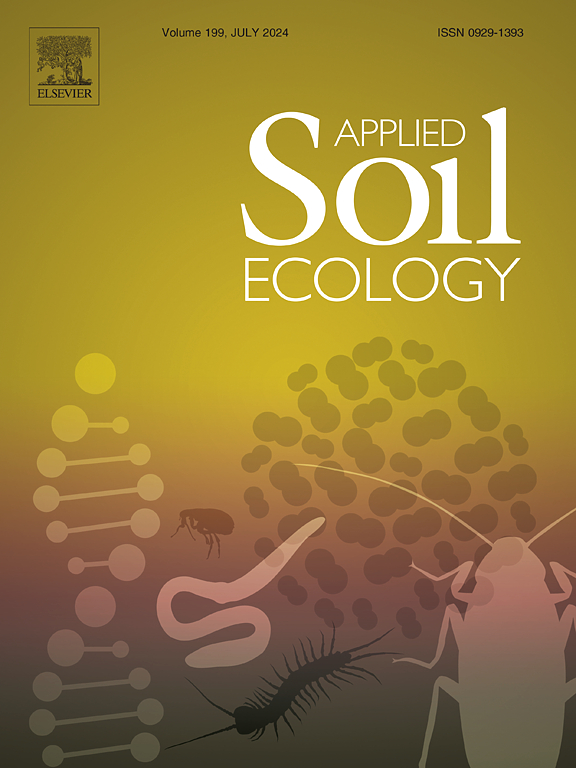Destabilized bacterial and fungal network weakens soil multifunctionality under increasing grazing stress
IF 4.8
2区 农林科学
Q1 SOIL SCIENCE
引用次数: 0
Abstract
Although it is universally acknowledged that grazing weakens most grassland ecosystem functions, the effect of varying grazing stress on soil multifunctionality (SMF) and the associated microbially-mediated mechanisms have not been fully elucidated. Here, we used a 20-year field experiment to evaluate the influence of different grazing intensities (no grazing [CK], light grazing [LG], moderate grazing [MG], and heavy grazing [HG]) on SMF and explored the regulating effect of bacterial and fungal community structure, network attributes. We evaluated 18 soil functions including soil hydrological parameters, enzymatic activities, and nutrients to characterize four individual functions (water regulation and C-, N-, P- cycling) and SMF. Our results showed that except for water regulation, SMF and other individual functions gradually decreased with increasing grazing stress. In addition, high grazing stress also reduced microbial diversity and network complexity destabilized bacterial network stability. Structural equation modeling revealed that SMF was mainly regulated by bacterial network complexity and fungal network stability. These results provide strong empirical evidence that bacterial and fungal communities have different roles in shaping SMF along grazing stresses gradient. Therefore, assessing soil multifunctionality should account not only microbial diversity but also their interactions within microbial networks. This approach is crucial for informing strategies in the degraded land restoration and sustainable utilization of grassland in arid and semi-arid ecosystems.
求助全文
约1分钟内获得全文
求助全文
来源期刊

Applied Soil Ecology
农林科学-土壤科学
CiteScore
9.70
自引率
4.20%
发文量
363
审稿时长
5.3 months
期刊介绍:
Applied Soil Ecology addresses the role of soil organisms and their interactions in relation to: sustainability and productivity, nutrient cycling and other soil processes, the maintenance of soil functions, the impact of human activities on soil ecosystems and bio(techno)logical control of soil-inhabiting pests, diseases and weeds.
 求助内容:
求助内容: 应助结果提醒方式:
应助结果提醒方式:


